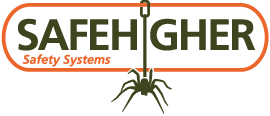Category: Handrails and Roof Edge Protection
When Seeking to Prevent Falls, What Should Priority Be Given To?
Falls from height are a leading cause of workplace injuries and fatalities across many industries. Ensuring worker safety should always be a top priority, especially for those who regularly operate in environments where the risk of falling is high. At Safe Higher Safety Systems, we understand that fall prevention goes beyond compliance; it is about […]
Read more...Addressing Common Work-at-Height Hazards: Strategies for Prevention and Mitigation
In any workplace, safety is paramount, especially when it comes to tasks performed at heights. Whether it’s construction, maintenance, or any other industry, working at height poses significant risks that must be addressed effectively. In the UK, regulations such as the Work at Height Regulations 2005 provide a framework for employers and employees to manage […]
Read more...Height Safety Essentials: Handrails and Roof Edge Protection in the United Kingdom
Working at heights comes with inherent risks, and prioritising safety is paramount in any job that involves elevated surfaces. Whether it’s construction, maintenance, or any other work-at-height activity, implementing proper safety measures is crucial to prevent accidents and ensure the well-being of workers. In the United Kingdom, where workplace safety regulations are stringent, handrails and […]
Read more...